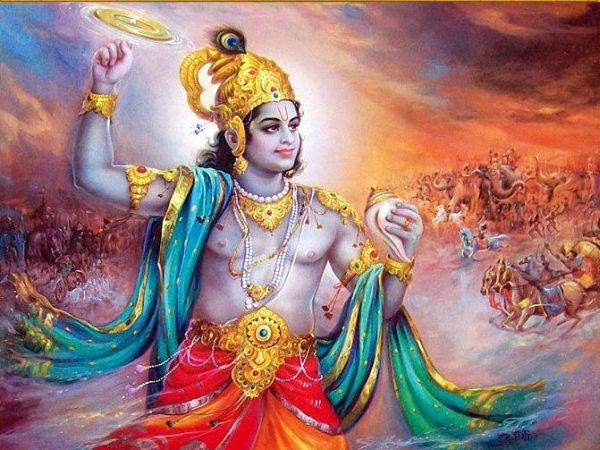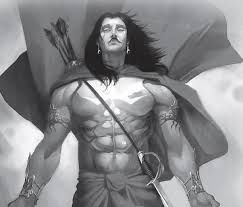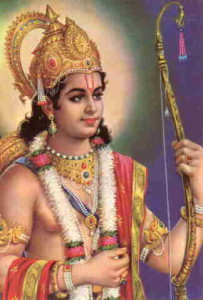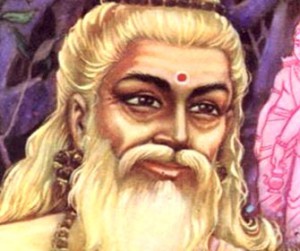Dronacharya’s Legacy
Dronacharya was the archery teacher for both the Kauravas and the Pandavas. During those times, Dronacharya was unmatched in his skill with the bow and arrow. He had a son named Ashwatthwama, who got his name because he neighed like a horse immediately after his birth—”Ashwa” means horse.
Dronacharya was extremely fond of his son. Under his father’s guidance, Ashwatthwama learned archery and became a great warrior. Ashwatthwama’s mother was the sister of another legendary archer, Kripacharya. Kripacharya also mentored Ashwatthwama and the Kauravas and Pandavas in archery. It was Kripacharya who initially suggested to Dronacharya that he teach the Kauravas and Pandavas.
Ashwatthwama’s Mastery
With the combined teachings of Dronacharya and Kripacharya, Ashwatthwama mastered many secret techniques of archery and became an expert archer. Meanwhile, due to a deceitful game of dice with Duryodhana and the Kauravas, the Pandavas were sent into exile in the forest. Ashwatthwama knew that Krishna, the divine charioteer and guide, was very fond of the Pandavas, particularly Arjuna.
Seeking Krishna’s Weapon
Ashwatthwama thought this was an opportune moment to seek something valuable from Krishna. He approached Krishna and said, “I am offering you my most powerful weapon, the Brahmashira. It can kill anyone it is used against. Will you not give me your Sudarshan Chakra in return? I would be so grateful.”
Krishna, with his ever-present smile, replied, “Wonderful! I am ready to exchange. Please take it.”
The Attempt to Lift the Sudarshan Chakra
Ashwatthwama, filled with anticipation, tried to lift the Sudarshan Chakra. Despite his strength and skills, he found it impossible to lift the divine weapon. Ashamed and embarrassed, Ashwatthwama looked at Krishna, who gently smiled and said, “Young man, you cannot even lift my weapon. How are you going to use it?”
Krishna’s words were a humbling lesson for Ashwatthwama. Krishna continued, “Be satisfied with what you have and fight against others with the help of your weapon. My weapon is too heavy for you.”
Moral of the Story
The story teaches a valuable lesson about understanding one’s limitations and being content with one’s abilities. It underscores the importance of humility and self-awareness, reminding us that not every powerful tool is meant for everyone.
Reflection on the Story
Contentment and Self-Awareness:
- The story illustrates the importance of being content with one’s own abilities and resources. Ashwatthwama’s desire to possess Krishna’s Sudarshan Chakra, despite having the powerful Brahmashira, highlights the human tendency to covet what others have.
Understanding Limitations:
- Krishna’s response emphasizes understanding and accepting one’s limitations. Not every powerful weapon or skill is meant for everyone, and recognizing this can prevent unnecessary embarrassment and failure.
Humility in Seeking Help:
- Approaching someone for assistance or a favor requires humility. Ashwatthwama’s approach to Krishna and the subsequent lesson he learns underline the need for humility when seeking help from others.
Lessons to Be Learned
- Be Content with What You Have:
- It is important to appreciate and make the best use of the resources and skills you possess rather than coveting what others have.
- Recognize and Accept Your Limitations:
- Understanding your own limitations is crucial. Not every tool or skill is suitable for everyone, and recognizing this can help avoid failure and embarrassment.
- Seek Help with Humility:
- When seeking help or favors, approach with humility and be prepared for the possibility that what you desire may not be suitable for you.
- Value Your Own Abilities:
- Each person has unique strengths and abilities. Valuing and honing your own skills is more beneficial than desiring someone else’s.
Conclusion
The story of Ashwatthwama and the Sudarshan Chakra imparts valuable lessons about contentment, self-awareness, humility, and the importance of valuing one’s own abilities. It reminds us that true strength lies in recognizing and making the best use of what we have, rather than yearning for what belongs to others.



